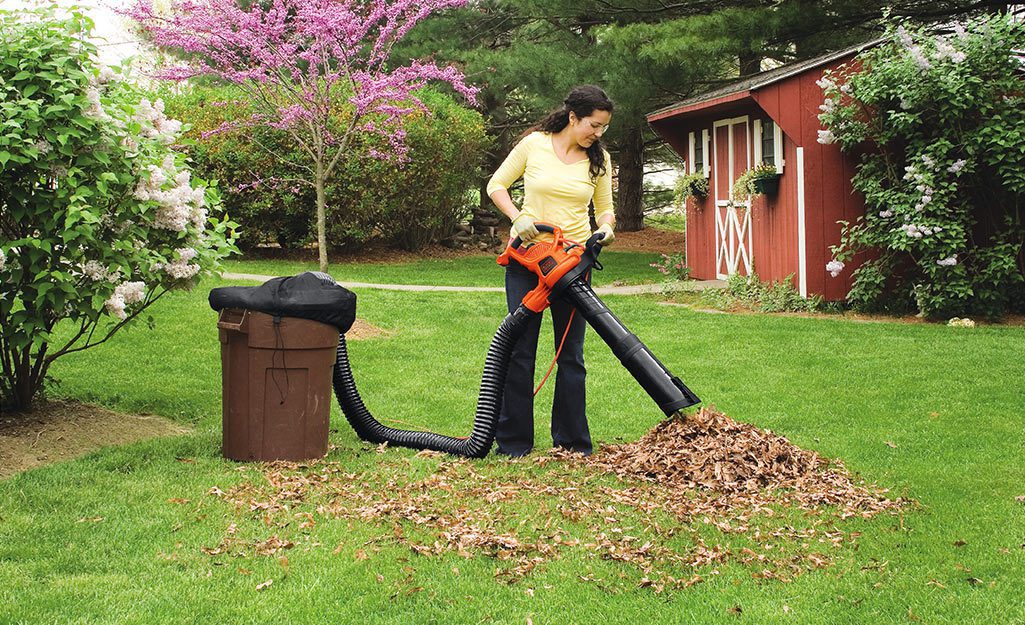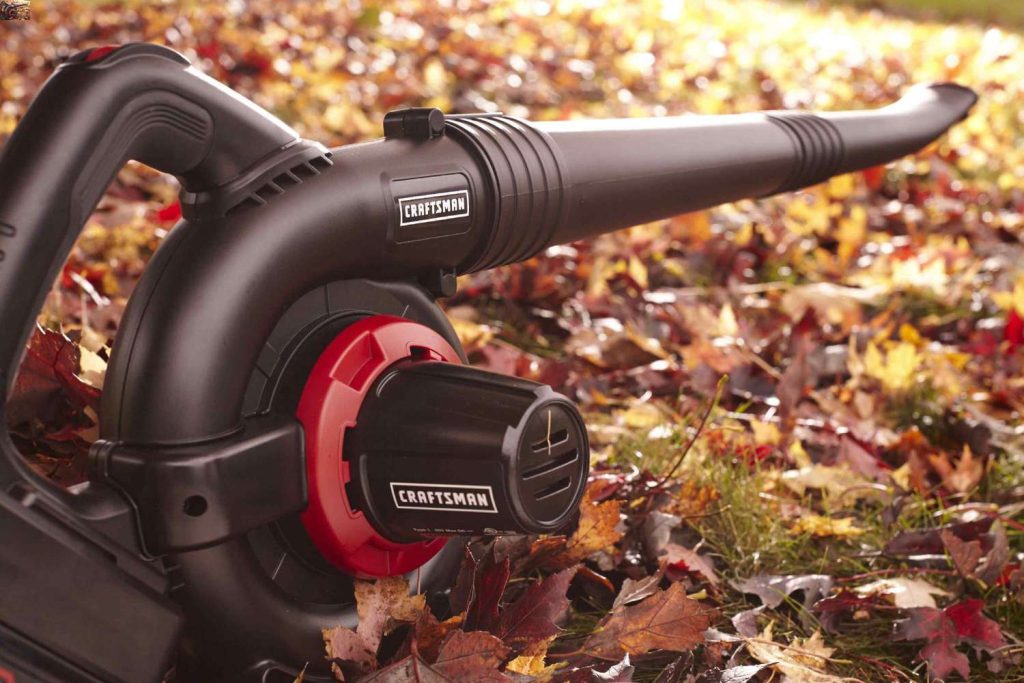Leaf blowers are a fascinating piece of technology that effortlessly tackles the daunting task of clearing leaves from our yards. But have you ever wondered how these mighty machines actually work their magic? In this article, we will explore the inner workings of leaf blowers and unveil the secrets behind their leaf-moving prowess. From the powerful engine to the ingenious airflow design, we will uncover the underlying mechanics that make leaf blowers a true ally in the battle against leaves. So, sit back, relax, and prepare to be amazed as we unlock the mysteries of leaf blower wizardry!
This image is property of www.familyhandyman.com.
Overview of Leaf Blowers
Introduction to leaf blowers
Leaf blowers are versatile, handheld gardening tools that are designed to efficiently move leaves and debris. They are incredibly popular among homeowners, gardeners, and landscapers due to their effectiveness and convenience. Whether you have a large yard or a small garden, a leaf blower can come in handy when it comes to keeping your outdoor spaces clean and tidy. In this article, we will explore the various types of leaf blowers, their components, and how they work.
Types of leaf blowers
Leaf blowers come in three main types: gas-powered, electric, and battery-powered. Gas-powered blowers are generally the most powerful and are ideal for larger yards. They require a mixture of gas and oil to operate, and their engines are typically two-stroke or four-stroke. Electric blowers, on the other hand, rely on electricity to function and are usually corded, requiring an electrical outlet nearby. Battery-powered blowers offer the advantage of being cordless, using rechargeable batteries as a power source.
Working principle of leaf blowers
The primary working principle of a leaf blower involves generating airflow at high speeds to move leaves and debris. When you turn on a leaf blower, air is sucked into the blower housing through an intake mechanism. The air is then forcefully expelled through a nozzle or tube, creating a powerful jet of air that is directed towards the leaves or debris. This high-velocity air is capable of dislodging and moving lightweight objects, such as leaves, with ease.
The Components of Leaf Blowers
Engine
The engine is the heart of a leaf blower, responsible for generating the power needed to move the air. Leaf blowers can be equipped with different types of engines, including two-stroke engines, four-stroke engines, and electric motors. The engine provides the necessary power to drive the fan, which creates the airflow.
Fan
The fan is a crucial component of a leaf blower as it is responsible for creating the airflow. It consists of a rotating blade or impeller that draws air into the blower housing and then forces it out through the nozzle. The design and shape of the fan blades play a significant role in determining the airflow velocity and efficiency of the leaf blower.
Tubes and nozzles
Tubes and nozzles are essential components of a leaf blower, as they help direct and control the airflow. Tubes are long, curved or straight attachments that connect the blower housing to the nozzle. The nozzle, which is usually adjustable, is the final point of exit for the air. By adjusting the positioning of the nozzle, the user can control the direction and focus of the airflow.
Blower housing
The blower housing is the outer casing that houses the engine, fan, and other internal components of the leaf blower. It acts as a protective covering, ensuring the longevity and durability of the blower. The design of the blower housing plays a role in reducing noise and vibrations, making the leaf blower more comfortable to use.
Ignition system
The ignition system is responsible for starting the engine of gas-powered leaf blowers. It consists of a spark plug and an ignition coil. When the user pulls the starter cord, it rotates the flywheel, generating a magnetic field. This magnetic field induces a current in the ignition coil, which produces a high-voltage spark at the spark plug, igniting the fuel-air mixture in the engine cylinder.
Fuel system
Gas-powered leaf blowers rely on a fuel system to power the engine. The fuel system is comprised of a fuel tank, a carburetor or fuel injection system, and fuel lines. Gasoline and oil are mixed together in the correct proportions and stored in the fuel tank. The carburetor or fuel injection system then delivers the fuel mixture to the engine to provide the necessary power for operation.
The Engine
Types of engines used in leaf blowers
Leaf blowers can be equipped with different types of engines, depending on their design and intended use. The most common types of engines used in leaf blowers are two-stroke engines, four-stroke engines, and electric motors.
Two-stroke engines
Two-stroke engines are popular in many handheld gardening tools, including leaf blowers, due to their lightweight and compact design. These engines require a fuel mixture of gasoline and oil for operation. Unlike four-stroke engines, two-stroke engines do not have separate intake and exhaust strokes. Instead, all four strokes (intake, compression, combustion, and exhaust) are completed in just two strokes of the piston.
Four-stroke engines
Four-stroke engines are similar to the engines found in automobiles and are known for their fuel efficiency and low emissions. These engines have separate strokes for intake, compression, combustion, and exhaust. Unlike two-stroke engines, four-stroke engines do not require a fuel-oil mixture. Instead, they run on pure gasoline, making them easier to refuel.
Electric motors
Electric leaf blowers are powered by electric motors and offer the advantage of being lightweight, quiet, and low-maintenance. They do not emit any exhaust emissions, making them an environmentally friendly option. Electric leaf blowers are usually corded, requiring a nearby electrical outlet, but battery-powered models are becoming increasingly popular due to their portability.
Air Flow and Fan Design
The role of air flow in leaf blowing
Air flow plays a crucial role in the effectiveness of a leaf blower. The faster the air flows, the greater the force it exerts on leaves and debris, making it easier to move and clear them. With the right air flow, even wet leaves and heavier debris can be efficiently blown away. It is important to note that the air speed and volume must be balanced to achieve optimal performance.
The importance of fan design
The design of the fan blades greatly influences the air flow generated by the leaf blower. Fan blades are typically curved or angled to efficiently move air. The shape and number of blades, as well as their positioning, impact the performance of the leaf blower. Some fans have more blades for increased air volume, while others have fewer blades for higher air speed.
Centrifugal vs axial fans
Leaf blowers can utilize two main types of fans: centrifugal and axial fans. Centrifugal fans are designed to move air perpendicular to the axis of the fan blades. They generate high air pressure, making them suitable for tasks that require blowing leaves over longer distances. Axial fans, on the other hand, move air parallel to the axis of the fan blades. They are more commonly used in handheld leaf blowers, as they provide a high volume of air at a lower pressure, ideal for close-range tasks.
This image is property of contentgrid.homedepot-static.com.
Tubes and Nozzles
Functions of tubes and nozzles
Tubes and nozzles play an integral role in the functionality of leaf blowers. The primary functions of tubes and nozzles are to direct and control the airflow. By adjusting the positioning of the nozzle or changing the tube attachment, the user can change the direction and focus of the air, allowing for more precise blowing and debris removal.
Different types of tubes and nozzles
Leaf blowers come with various types of tubes and nozzles, each serving different purposes. Flat nozzles are ideal for creating a concentrated and powerful jet of air, making them useful for moving heavy debris. Round nozzles provide a broader airflow pattern, making them suitable for clearing larger areas of leaves. Some leaf blowers also feature mulching attachments that enable the user to shred the leaves as they are being blown, reducing their volume and facilitating easy disposal.
Influence on air velocity and direction
The design and length of tubes and nozzles directly impact the air velocity and direction. A longer tube, for example, can increase the air velocity, allowing for greater blowing power. Nozzles with adjustable angles or variable opening sizes provide flexibility in controlling the direction and intensity of the airflow. The combination of different tubes and nozzles allows users to customize their leaf blower to suit the specific demands of their outdoor spaces.
The Blower Housing
Protective casing for internal components
The blower housing serves as a protective casing for the internal components of the leaf blower. It shields the engine, fan, and other delicate mechanisms from external elements, such as dust, dirt, and debris. A sturdy and durable blower housing is essential to ensure the longevity and reliability of the leaf blower.
Materials used
Blower housings are typically made from durable materials, such as plastic or metal alloys. Plastic housings are lightweight, easy to handle, and resistant to corrosion. Metal housings provide enhanced durability and protection, but they can add weight to the leaf blower. Manufacturers often choose materials that strike a balance between durability, weight, and affordability to meet the needs of users.
Factors affecting durability and efficiency
Several factors can affect the durability and efficiency of the blower housing. The thickness and quality of the material used can determine how well the housing withstands impacts and regular wear and tear. The design and construction of the housing, including the presence of reinforced areas and shock-absorbing features, also play a role in enhancing its durability. Additionally, proper maintenance and cleaning of the blower housing can significantly prolong its lifespan.
This image is property of www.agriculture.com.
The Ignition System
Spark plug and ignition coil
The ignition system of a leaf blower consists of a spark plug and an ignition coil. The spark plug is responsible for generating a spark that ignites the fuel-air mixture in the engine cylinder. The ignition coil, also known as a magneto, produces a high-voltage electrical current to create the spark.
Role in starting the engine
To start a gas-powered leaf blower, the user pulls on the starter cord, which rotates the flywheel. As the flywheel spins, it generates a magnetic field. This magnetic field induces a current in the ignition coil, which produces a high-voltage spark at the spark plug. The spark ignites the fuel-air mixture, starting the engine.
Types of ignition systems in leaf blowers
Leaf blowers can be equipped with either contact breaker ignition systems or electronic ignition systems. Contact breaker ignition systems use mechanical points to control the timing of the spark. Electronic ignition systems, on the other hand, utilize solid-state components, such as transistors and Hall effect sensors, to precisely control the ignition timing. Electronic ignition systems are generally more reliable and require less maintenance compared to contact breaker systems.
The Fuel System
Fuel types used in leaf blowers
Gas-powered leaf blowers require specific types of fuels to operate. Typically, leaf blowers run on unleaded gasoline. It is important to use clean and fresh gasoline to prevent engine problems. Gasoline containing high levels of ethanol should be avoided, as it can lead to carburetor issues and other engine malfunctions.
Fuel mixtures for two-stroke engines
Two-stroke engines found in leaf blowers require a mixture of gasoline and two-stroke oil for lubrication. The fuel mixture is prepared based on a specified ratio, commonly 1:40 or 1:50, which indicates the proportion of gasoline to oil. It is crucial to mix the fuel accurately to ensure proper lubrication and prevent engine damage.
Carburetors and fuel injection systems
Leaf blowers with gas-powered engines utilize either carburetors or fuel injection systems to deliver the fuel mixture to the engine. Carburetors mix air and fuel in the right proportion and deliver it to the engine cylinder. Fuel injection systems, which are more commonly found in larger and more advanced leaf blowers, use electronic sensors and injectors to precisely deliver the fuel mixture to the engine.
This image is property of contentgrid.homedepot-static.com.
Operation and Control
Starting the leaf blower
To start a gas-powered leaf blower, the user must follow a specific procedure. First, ensure that there is enough fuel in the tank and that the spark plug is in good condition. Prime the engine by pumping the primer bulb several times to fill the carburetor with fuel. Set the choke to the starting position and engage the throttle lock. Pull the starter cord firmly and smoothly until the engine starts. Once the engine is running, deactivate the choke and adjust the throttle to the desired setting.
Throttle control
Throttle control allows the user to adjust the engine speed or airflow, providing different levels of blowing power. Many leaf blowers have variable throttle settings, allowing users to increase or decrease the speed of the engine based on their needs. By adjusting the throttle, users can adapt the blowing force to the specific requirements of their outdoor space, whether it be clearing light leaves or tackling heavier debris.
Noise reduction mechanisms
Leaf blowers can produce significant noise levels during operation, which can be quite disturbing to users and those in the vicinity. To mitigate noise pollution, leaf blowers are often designed with noise reduction mechanisms. These mechanisms can include specially designed intake and exhaust ports, noise-dampening materials, and mufflers. It is important to consider noise levels when selecting a leaf blower, especially if you live in a noise-sensitive area.
Vibration dampening systems
Handheld leaf blowers transmit vibrations to the user’s hands and arms during operation. Prolonged exposure to these vibrations can lead to discomfort and fatigue. To minimize this issue, many leaf blowers incorporate vibration dampening systems. These systems utilize various methods, such as anti-vibration mounts and cushioned handles, to reduce the amount of vibration transferred to the user, allowing for more comfortable and prolonged use.
Maintenance and Troubleshooting
Regular maintenance
Regular maintenance is essential to ensure the optimal performance and longevity of a leaf blower. Some key maintenance tasks to consider include checking and cleaning the air filter regularly, inspecting and tightening screws and bolts, lubricating moving parts, and cleaning the blower housing. It is important to refer to the manufacturer’s guidelines and recommendations for specific maintenance procedures.
Cleaning the air filter
The air filter in a leaf blower plays a crucial role in preventing dust, debris, and other particles from entering the engine and causing damage. Over time, the air filter can become clogged with dirt and debris, limiting airflow and affecting performance. Cleaning the air filter regularly will ensure that the engine receives a clean supply of air. Depending on the type of filter, it may require washing, tapping to remove debris, or replacement.
Troubleshooting common issues
Despite regular maintenance, leaf blowers may encounter common issues that can affect their performance. Some common problems include difficulty starting the engine, poor airflow, overheating, or excessive vibrations. If you encounter any of these issues, it is recommended to consult the user manual or contact the manufacturer for troubleshooting advice. It is important to address the problem promptly to prevent further damage to the leaf blower.
In conclusion, leaf blowers are versatile tools that help keep outdoor spaces clean and free of debris. Understanding the various components, such as the engine, fan, tubes, and nozzles, as well as the operation and maintenance of leaf blowers, allows users to maximize their efficiency and lifespan. By choosing the right type of leaf blower for your needs and following proper maintenance procedures, you can enjoy the benefits of a clean and well-maintained outdoor environment.
This image is property of thediyplan.com.








































